While most of the world rings in the New Year with partying and fireworks, celebrations in Japan are a little more subdued. That’s because shōgatsu, as it’s known here, is the most important holiday of the year. Every new year is considered to be a clean slate, and the first day, representative of what’s to come. So, it’s important to wrap up any business and clean everything thoroughly. That way, January 1 can be enjoyed in peace.
Most of the country shuts down until January 3 and people typically spend the holiday with their families. During this time, many New Year’s traditions are enjoyed, including watching the first sunrise of the year and eating special dishes called osechi ryori. It’s also customary to visit a shrine or temple, known as hatsumode, to pray for a good year ahead.
Unfortunately, the Year of the Dragon kicked off to a rough start here in Japan. The formidable animal is associated with good luck and strength, but it’s also said to bring volatile energy. And there’s nothing quite as volatile as a magnitude 7.6 earthquake. Going to a shrine or temple to pray for good fortune seemed more important than ever.
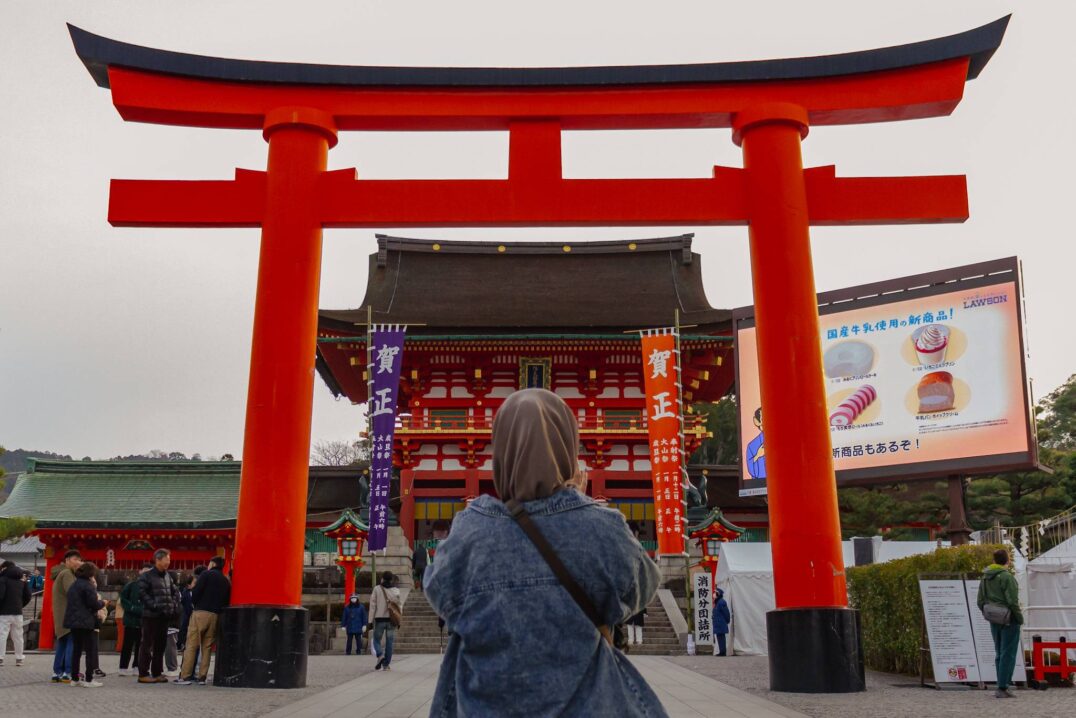
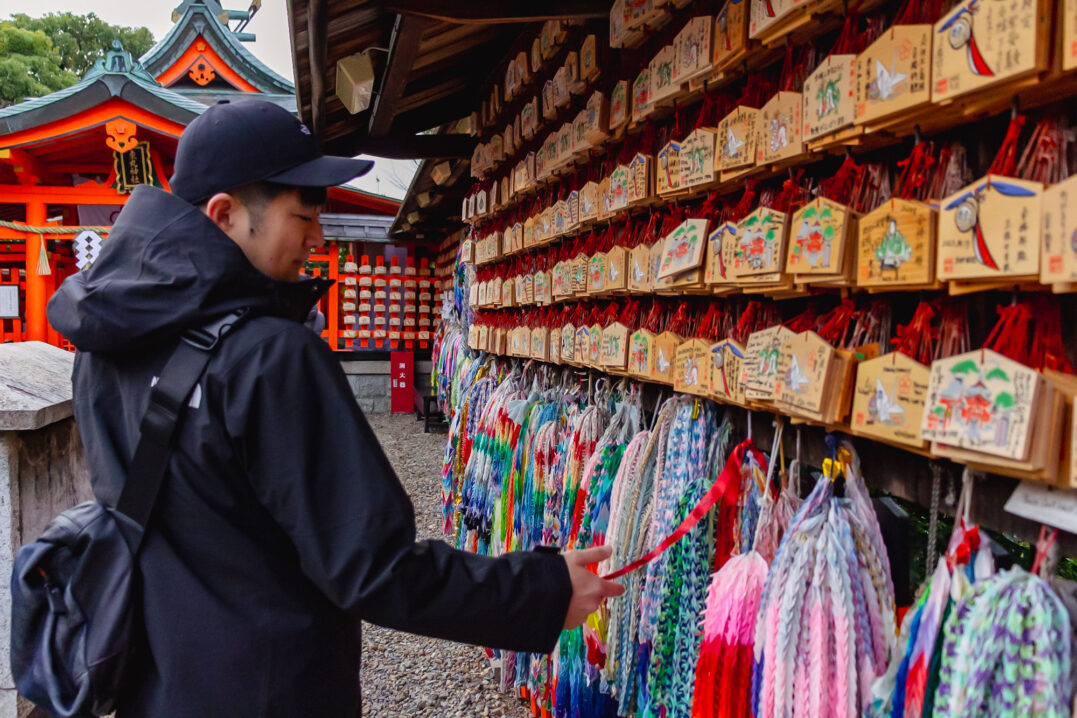

I was headed to Kyoto, which is the perfect place to experience hatsumode. I planned to do so with my dear friend, Kyohei. We hadn’t seen each other since exploring Sun Messe together in 2017, so it would be an extra special treat. He told me to pick a shrine and I chose Fushimi Inari.
Fushimi Inari is one of the most famous shrines in all of Japan, known for its thousands of vermilion torii gates. It’s one of many shrines dedicated to the Shinto god of rice, Inari. Each god is believed to have its own animal messengers, and foxes are thought to be Inari’s. So, the grounds of Fushimi Inari are guarded with many fox statues. If you look closely enough, you may also spot one of the many stray cats that roam around the area.
I always thought Fushimi Inari was just one long tunnel of torii, but as it turns out, there’s an entire network that leads into the forest of Mount Inari. The torii themselves are donations from companies and individuals; you can see the names of the donors inscribed on the back of each. There’s still space to add a gate of your own, which will set you back between 400k–1 million yen (about $2665–6665).

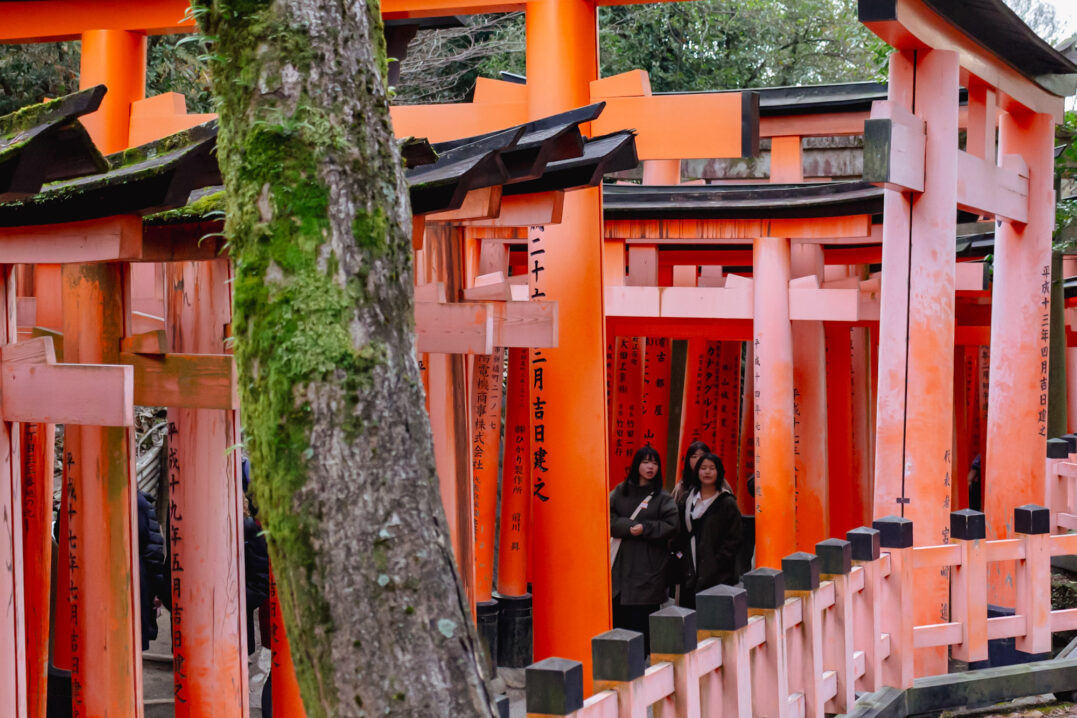

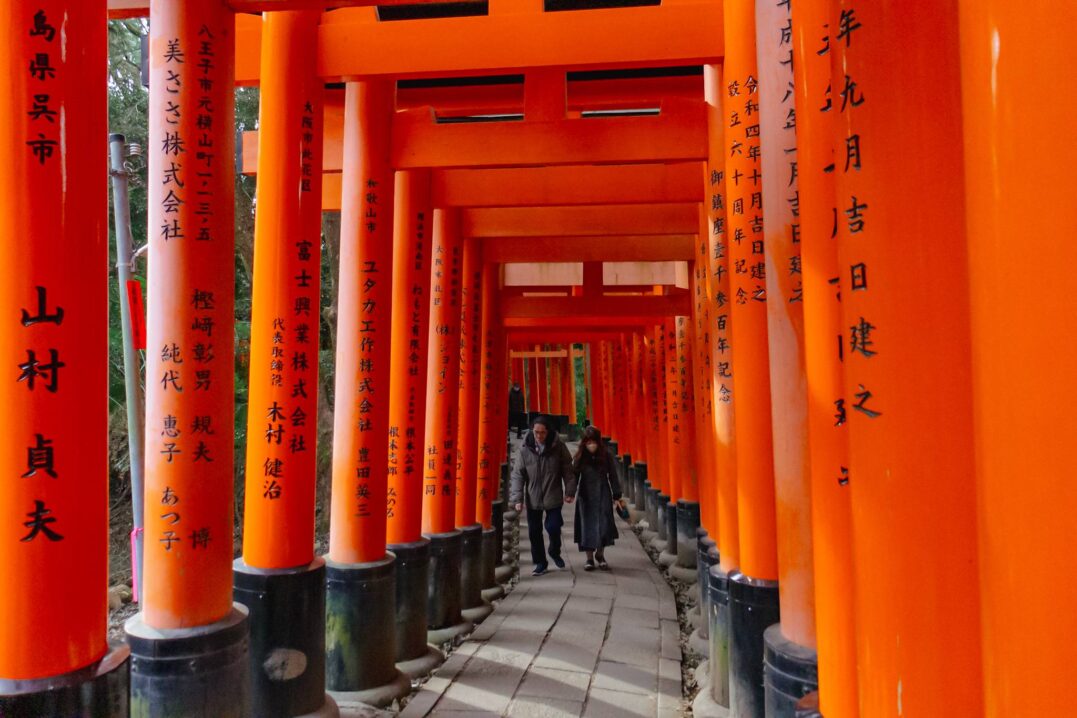



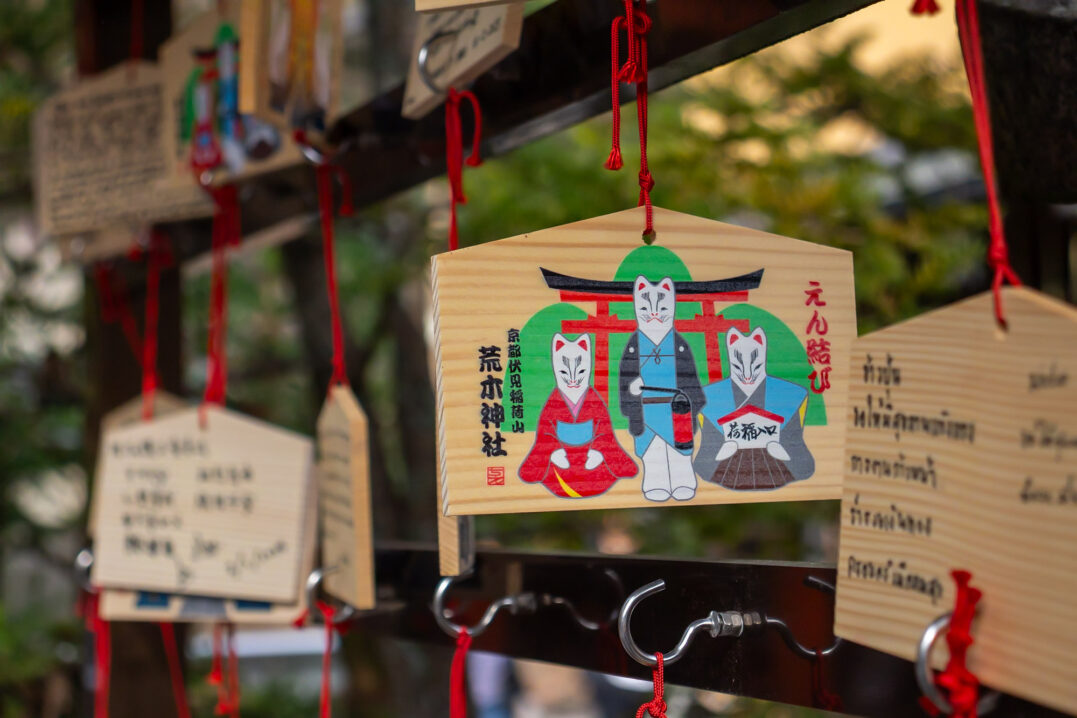

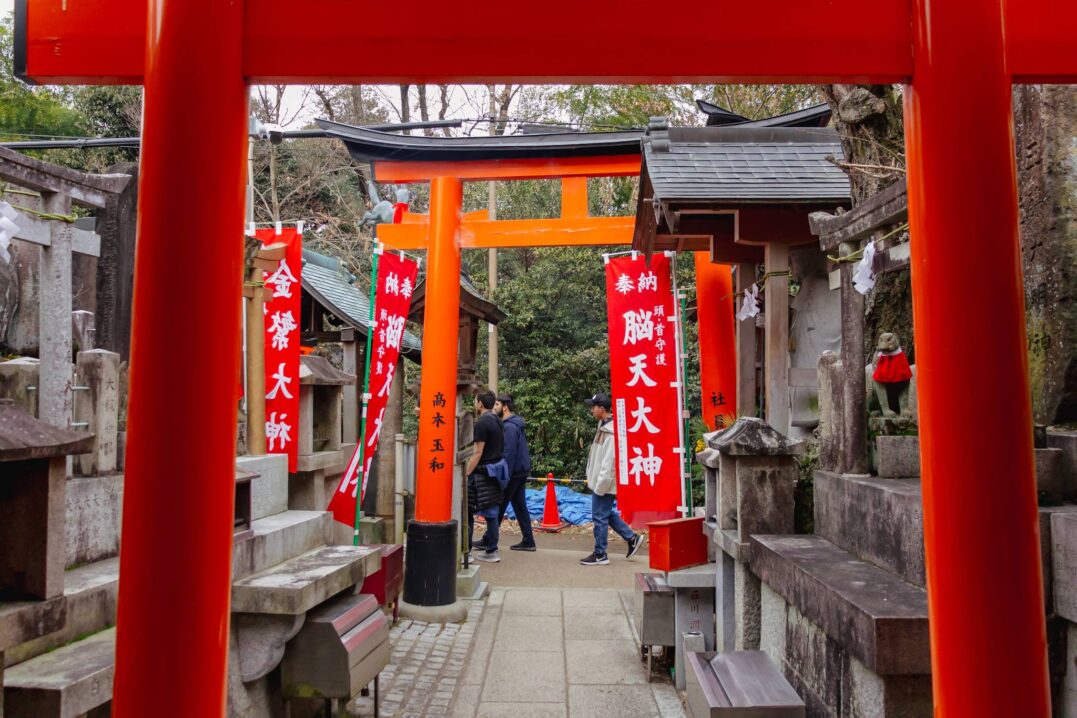

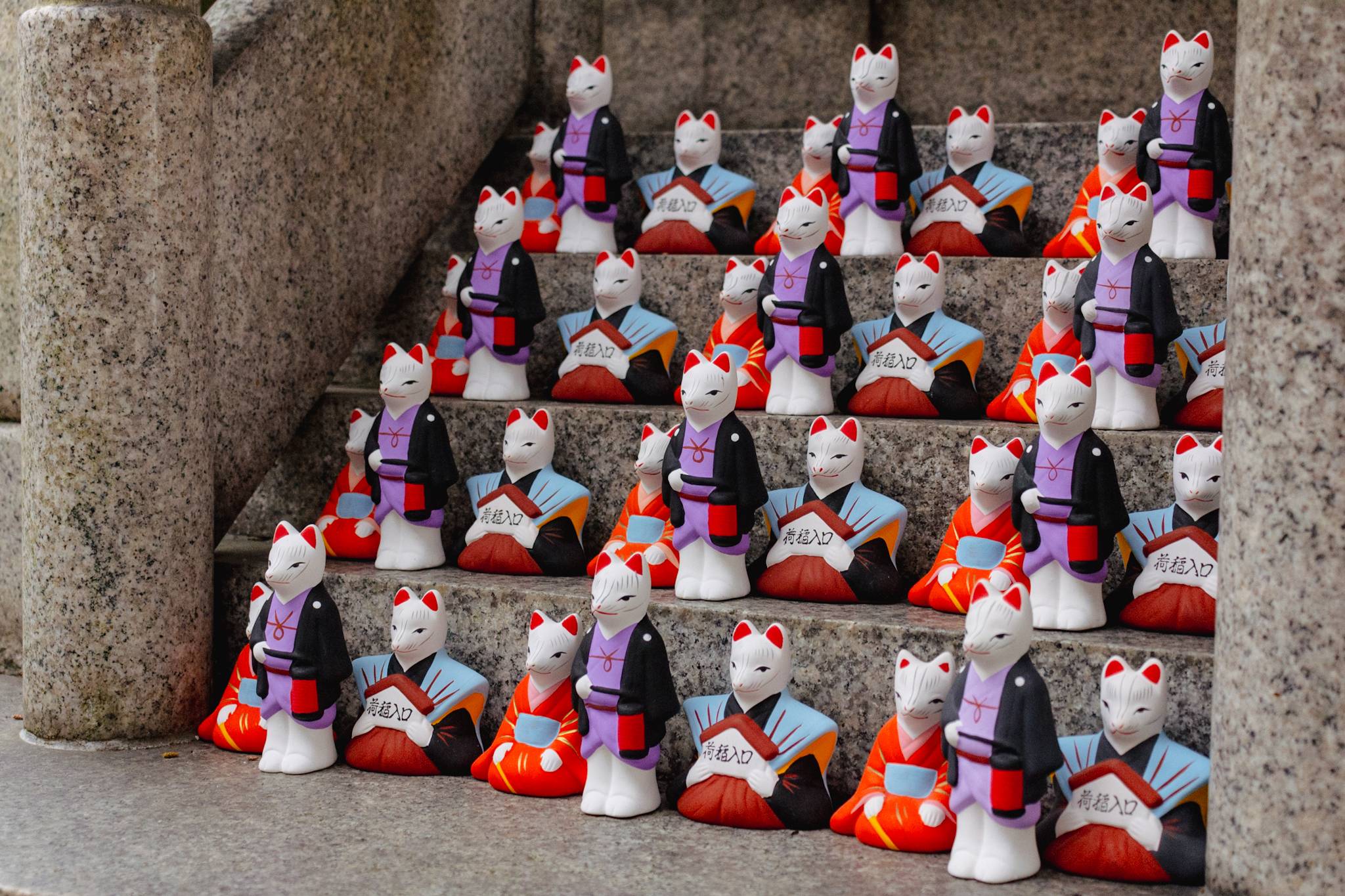

You can easily spend 2-3 hours traversing the trails of Fushimi Inari, some of which go all the way to the summit of the 233-m (764-ft) mountain. We made it as far as the Yotsutsuji intersection, which sits roughly halfway up. You can enjoy some pretty nice views from Kyoto there.
Fushimi Inari is deceptively large. There’s so much to see and do on just on the trails alone. We even stopped for coffee and matcha jelly at one of the small cafes. Then there’s all the buildings to explore surrounding the main gate. By the time we got back there, the shrine had filled up with a huge crowd.
From the shrine, you can stroll down Fushimi Inari Sando Shopping Street, which leads back to Fushimi-Inari Station. It’s lined with an array of souvenir shops and food stalls, including ones selling roast sparrow. The delicacy comes skewered on a stick, much like yakitori, and is glazed in soy sauce for flavor. Maybe you’ll be braver than I was to give it a try.





Visit Fushimi Inari Shrine
Fushimi Inari Shrine is a 3-min walk from JR Inari Station (稲荷駅). If you’re coming from Kyoto Station, it’s only two stops away on the JR Nara Line. You can also reach the shrine from Keihan Electric Railway Inari-Fushimi Station (伏見稲荷駅) on the Keihan Main Line. It’s about a 5-min walk to the shrine from there.
Hours: Open 24/7
Admission: Free



